Missing on madison
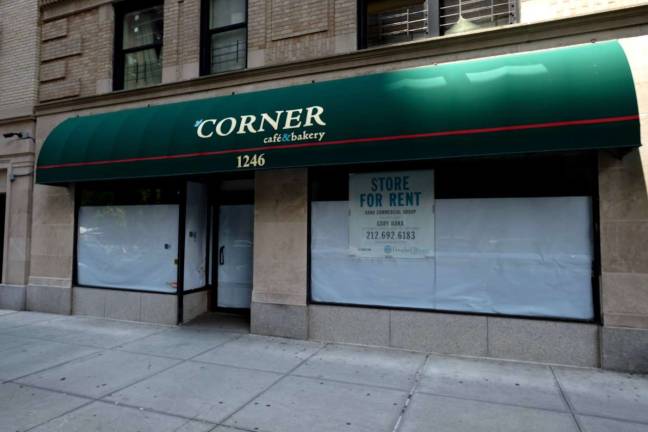
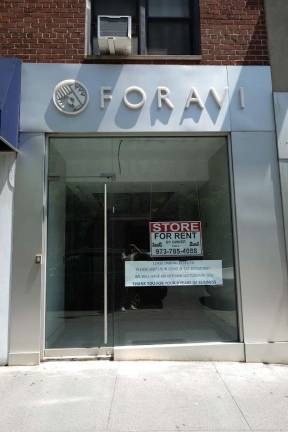
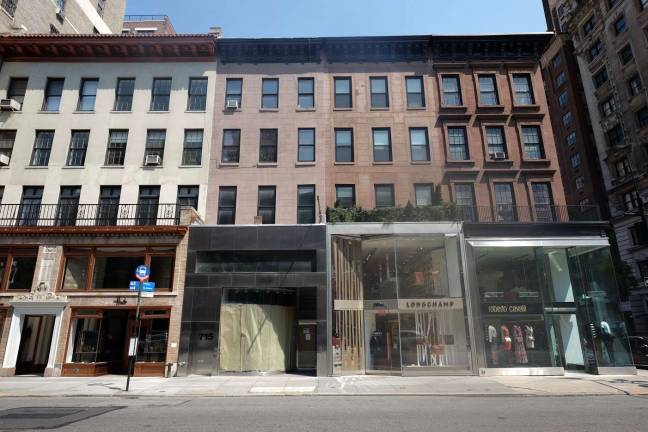
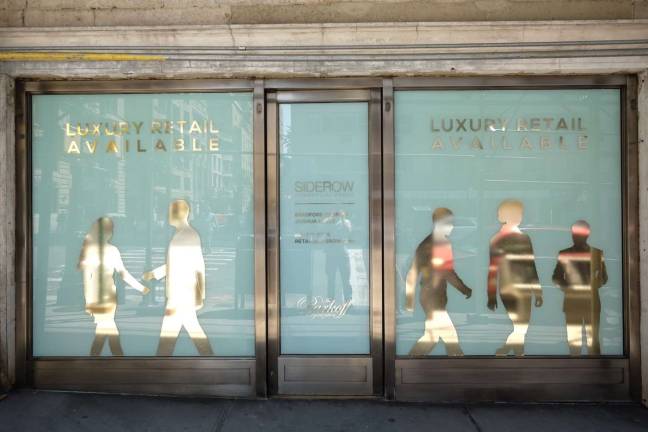
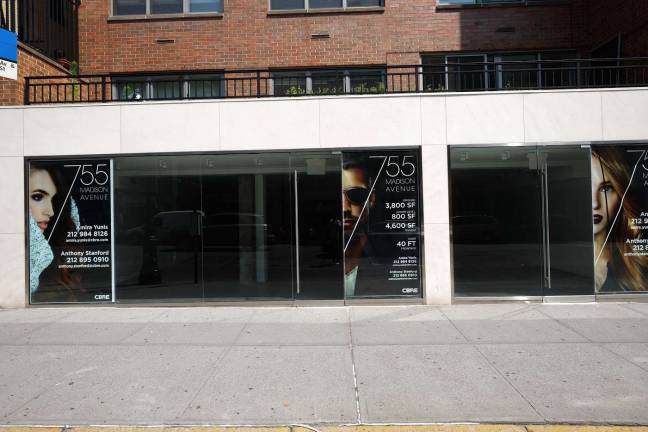
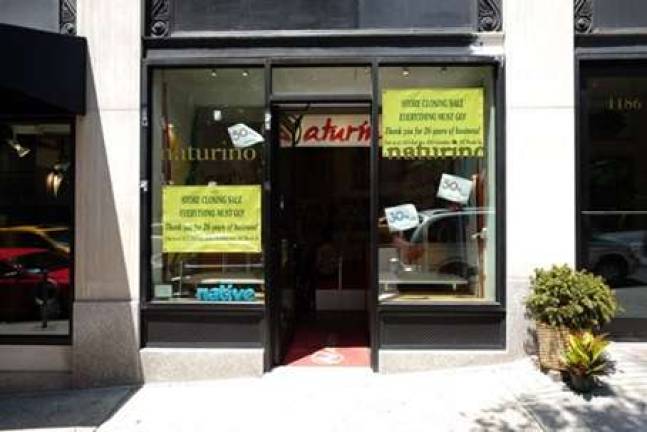
The storefronts are dark. Brown paper often covers the windows. There is a feeling of hollowness. Even the signboards can be unsettling: “Store Closing Sale” and “Everything Must Go” and “Store for Rent,” they read.
Still, an air of optimism is also maintained. “Showcase Your Brand,” one sign reads. “Luxury Retail Space Available for Lease,” says another. As for positive spin, “Prime Retail Flagship Opportunity” is hard to surpass.
Yet every once in a while, a plaintive note is posted: “Thank You for 26 Years of Business!” And that is when it dawns on you. This is not only a story about “Availability” — a word preferred by brokers and landlords — it is also about “Vacancy,” a word seldom in evidence on the signs.
“There’s a New Look on Madison,” proclaims the signpost at 943 Madison Avenue, an empty storefront in a prime location, just one door south of the Met Breuer, the former site of the Whitney Museum of Art.
Unfortunately, that’s true. The photographer Pierre Crosby on Sunday, June 18, walking southbound down Madison, took pictures of what he believes to be 49 vacant retail spaces in the 35-block, 1.75-mile stretch between 57th Street and 92nd Street.
In an effort to confirm those findings, an Our Town reporter on Sunday, July 9 drove northbound over the same route twice — first up the east side of the avenue, then up the west side — and counted 46 apparent vacancies.
“I grew up going to the Rudolf Steiner School on 79th and Madison and have many memories of walking the avenue as a child — in awe of the window displays and luxury items,” said the 23-year-old Crosby.
“Today, it is sad to see so many of the mom-and-pop shops gone, and just a few still hanging on. Only the big-name brands, like Hermes and Louis Vuitton, are sure to stay, and it feels as if something is missing from the avenue and its allure,” he added.
Crosby’s stark portraits of emptiness, which he provided as a courtesy to Our Town, first ran in NewYorkSocialDiary.com, which chronicles old money, the nouveau riche and society doings in Manhattan and the Hamptons.
In a piece about the “deaccessioning of retail space” that accompanied the photos, society writer David Patrick Columbia, who co-founded the website, wrote bluntly that Madison Avenue, long the “crown jewel in American retailing,” is now “looking like the guy you run into on the street panhandling who is missing a lot of teeth.”
Wait a minute. Not so fast. Let’s get some perspective here. If Madison is the Hope Diamond of hyper-luxe shopping districts globally, let’s just stipulate that it has a flaw, an imperfection, as most diamonds do.
That being said, take a gander at 63rd Street, where you can still get a 100-carat stone at Graff Diamonds, a $9,500 moon quartz-and-diamond ring at David Yurman or a jeweled Duchessa watch with hand-engraved yellow-gold diamonds at Buccellati. Looking for $975 sneakers matched with $595 socks? Try Brunello Cucinelli a block south.
Or listen to Matthew A. Bauer, the president of the Madison Avenue Business Improvement District since 1999, who ticks off an A (Alison Lou) through V (Vinotherapie Spa by Caudalie) list of the 24 Madison Avenue shops that have opened their doors in the past year alone.
“That includes two new stores — Balenciaga and Golden Goose Deluxe Brand — that opened in just the past two weeks,” he said.
Are there challenges? Of course, Bauer acknowledges. In response to a query, he conducted his own survey of the BID’s territory, which runs from 57th to 86th Streets and takes in a short amount of frontage along the east and west cross streets.
He reported the results on July 10: Of the 472 ground-floor spaces in the BID, 38 are currently vacant, a rate of 8 percent.
“Throughout New York City and the country, there is a concern about spaces that are vacant,” Bauer said. “But the story about Madison Avenue in this difficult retail environment is the large amount of brands that are investing in the street — and making sizable contributions to the development of the district.”
Still, the avenue does contain a “great deal of empty space,” said Justin Levinson, whose Vacant New York website, founded last September, tracks the inventory.
“Landlords are looking for the few major brands who would open big flagship stores and could pay hundreds of thousands of dollars per month, but most of them aren’t going to get those tenants,” he said. “These are huge spaces, and there’s not a lot of people who can afford them.”
While there’s “no shortage of demand for storefront space,” Levinson added, “There’s just not the demand at the prices that are being asked for it.”
The results can be found on the placards that front these empty boutiques, some of which now operate from other locations:
* Foravi. A women’s clothing store, formerly at 1067 Madison Avenue. “Thank you for your 8 years of business.”
* Rachel Riley. A children’s clothing store, formerly of 1286 Madison Avenue. “After 10 years on Madison Avenue, our lease has come to an end.”
* Corner Café. A restaurant and bakery, formerly at 1246 Madison Avenue. “It’s been a pleasure serving our Carnegie Hill neighbors for the last 8 years.”
* Naturino. A shoe store, formerly of 1184 Madison Avenue. “Thank You for 26 Years of Business!”
Bauer boils down the issue like this: “The ideal situation is that there would not be one vacant store on all of Madison Avenue,” he said. “But this street, just like every other street in the Our Town coverage area, has not been immune to the challenges facing the retail industry.”
And he added, “If the question is, ‘Are major brands investing in the street?,’ the answer is, ‘Absolutely yes!’”